A millennium tuareg festival in the heart of the sahara
During my last trip to Algeria, I discovered while visiting Djanet that the region hosts one of the most important Tuareg festivals in the world every year: Sebiba.
Last May I was contacted by the Momondo team, they wanted to promote their campaign #DNAJourney through some bloggers.
The idea behind this operation is, I imagine, to show that we are never 100% of this or that origin.
Here is the video of Momondo's campaign that was launched on social networks;
Video:
I found the original idea, but above all it conveyed beautiful values and so I agreed to do a DNA test and go to discover my origins.
I am Eurasian, my mother has Vietnamese origins and my father is Algerian/French. I already knew that.
But this test revealed other unsuspected origins.
Here are all the results:
• North Africa: 32 per cent
• Iberian Peninsula (corresponding to Spain and Portugal today): 15%,
• Italy and Greece: 6%.
• West Asia: 20%.
• East Asia: 23%.
• Polynesia: 4% Polynesia
Even if I take these values with small tweezers taped to a 4-meter selfie pole, I found the results amazing. An idea is then launched;
Why not visit each of these regions? Bearing in mind that my ancestors come from these lands, I would perceive and perhaps live my journey differently.
The first one that came to mind was Polynesia. But despite my talent to find cheap plane tickets I can't find anything under 2000€ to join this group of islands located in the South Pacific Ocean.
It was then that I began to consider Algeria.
A few years ago, I had stumbled upon a book by Philippe Diolé (a friend of the commander Jacques Cousteau); The most beautiful desert in the world (released in 1955).
It presented the Sahara as the largest open-air museum with its impressive rocks, desert gorges and endless sand dunes.
But above all his countless prehistoric testimonies including the famous painting of the Martian God.
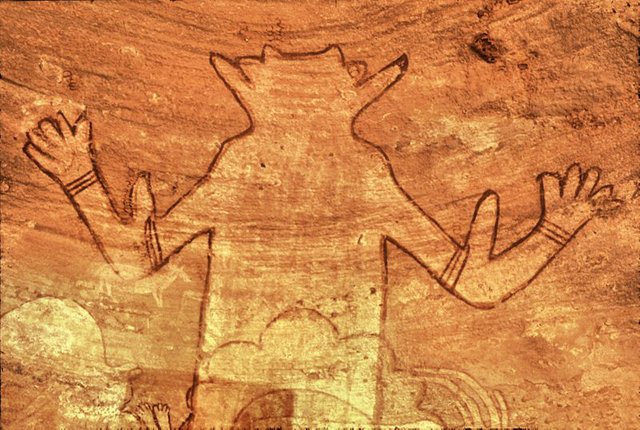
I see this as an opportunity to feed my curiosity and decide to return to this country and more particularly to the Saharan part.
I spend almost a month searching for different information on the internet and to my surprise I can hardly find any.
It must be said that the country suffered from terrorism in the 1990s, and this image still holds true today. Travelers today prefer to travel to more "safe" areas such as Tunisia or Morocco to enjoy the Sahara. And yet these countries are very different. Continuing my research I learn that for security reasons, and because the authorities want to control who enters and leaves the various national parks, it is impossible to travel to the extreme south of the country without going through a local and official travel agency.
I thought I was going to conquer the dunes and the different sites alone, but I didn't! But at the same time this point reassured me somewhat.
After talking for almost a month with different travel agencies, I met Bey.
Bey is a Tuareg native of the region. He pursued geological studies in his youth before moving back to the southern part of Algeria to open his travel agency in the 2000s. Its clients are mainly German, Italian, sometimes French and Swiss.
The feeling goes very well and I end up confirming my trip with him. He recommends that I arrive on September 30th to enjoy Sebiba, an ancestral festival that is more than 3000 years old. The day after the party we would drive to the Sahara.
So I would like to share with you in this first STORY the beginning of my trip to Algeria and more particularly my discovery of Sebiba.
Djanet, the oasis in the middle of the desert
After picking up my bag at the airfield, I head for the exit where Bey was waiting for me. He was dressed in a long garment and a goat's cheek that covered a large part of his head...
30 September, after a four-hour stopover in Algiers, I arrive at Djanet airport. Finally, airport is a big word. Rather, it is a tiny aerodrome composed of an airstrip in the middle of the dunes and a small hangar to receive luggage.
Djanet is this way:
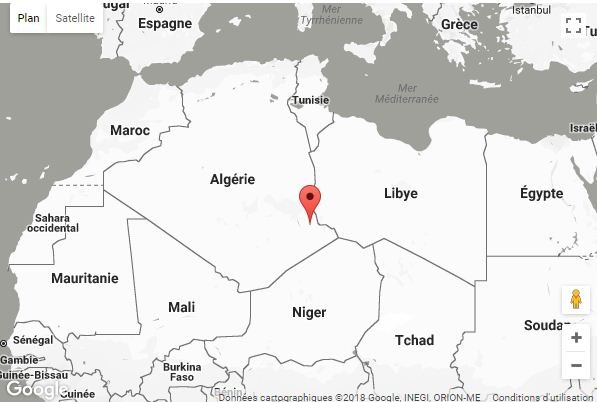
After picking up my bag, I'm headed to the exit where Bey was waiting for me. He was dressed in a long garment and a goat's cheek that covered his head and much of his face.
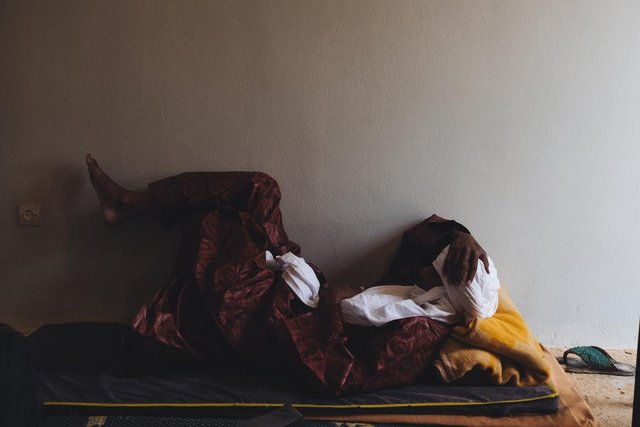
I must admit that at the time, I thought I was staging something to please tourists. But I would later realize that most of the locals dress this way.
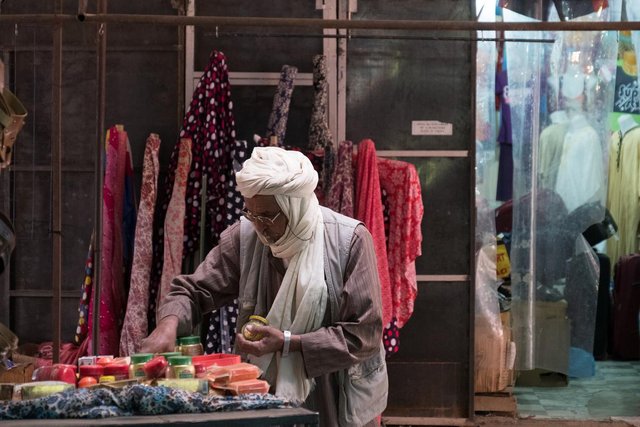
Traditional Tuareg clothes have a real use in the desert:
• They allow a good perspiration which helps the body to maintain its temperature.
• They allow good ventilation that cools the air under the dress a little.
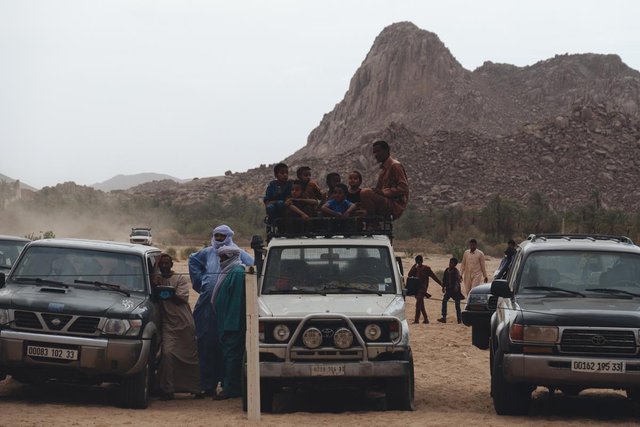
In the car we talk at length about the history of the region, the trekking program and of course about the Sebiba I didn't know anything about.
He explains to me that this party is more than 3000 years old. Each year it brings together the Tuareg of Tassili N' Ajjer and neighbouring countries to commemorate and celebrate a peace pact that was signed to end a war between the tribes of the region.
I was looking forward to it.
The Sebiba, a thousand year old Tuareg ritual
The ritual of the "Sebiba" brings together men and women from several Tuareg communities, they simulate the fight that once separated them into songs and dances....
After a good night's sleep and a quick stop at the souk of the city to buy me a goatee (and yeah, I have to play it local) Bey and I are heading towards the main square of Djanet.
On the road, there are people of all ages, young and old, children and babies in the arms of their mothers. They are all heading in the same direction, to the same place, smiling. We feel that this day is the event of the year, the one everyone is waiting for.
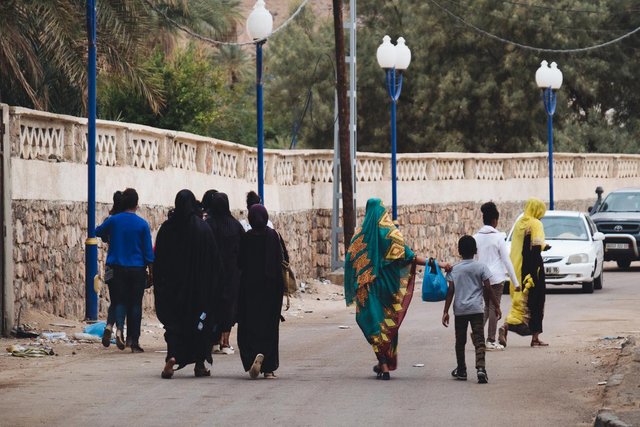
I try to find my way through the crowd to get as close as possible to the show and find myself right behind a group of Tuareg women dressed in traditional costumes with bright colors.
I decide to stay close to them.
Tuareg women participating in Sebiba
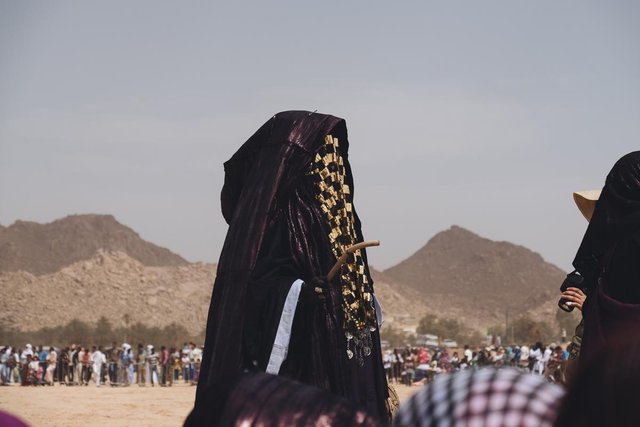
After an hour the decibels rise, and the women start singing songs to the rhythm of the tambourines while the men, all around them, devote themselves to swords dances by hand.....
In the heart of Sebiba
The women, dressed in their traditional vividly coloured dresses, sing to the rhythm of the drums to encourage men to dance swords by hand.
The music, the songs, the different dances, the vivid colour of the costumes, the reflection of the women's jewels and the sound of the swords of the men who click complement each other to form an intoxicating, magnificent and poetic show.
I have chills all over my body.
The Touareg Festival of Sebiba in Djanet
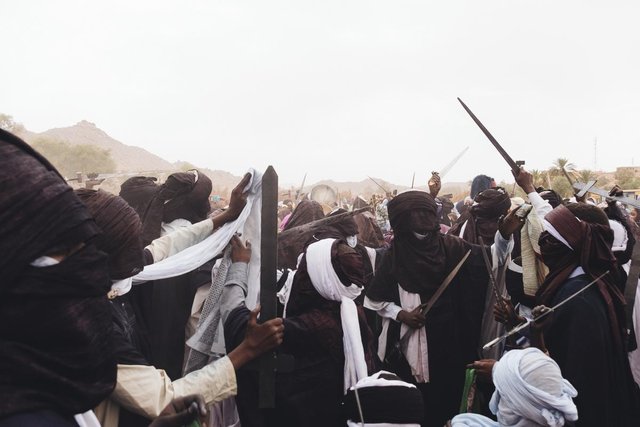
By inquiring about the origins of this feast, I discover that this ancestral rite would go back to the time when Moses defeated the Pharaoh's troops, causing his death.
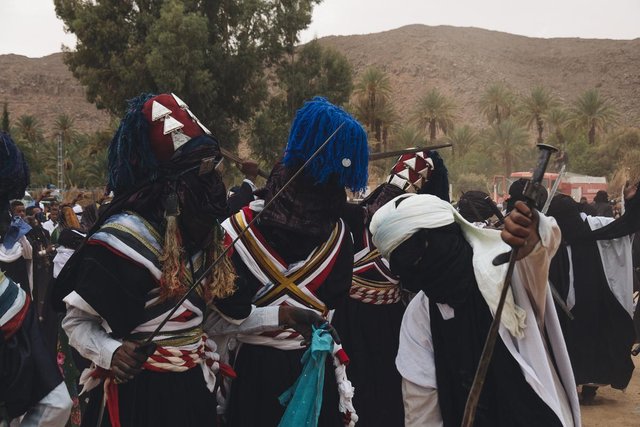
Legend has it that at that time, Moses' victory over the Pharaoh put an end to the perpetual battles between Tra' orfitt and Oraren. A peace pact was then signed to put an end to this fratricidal war.
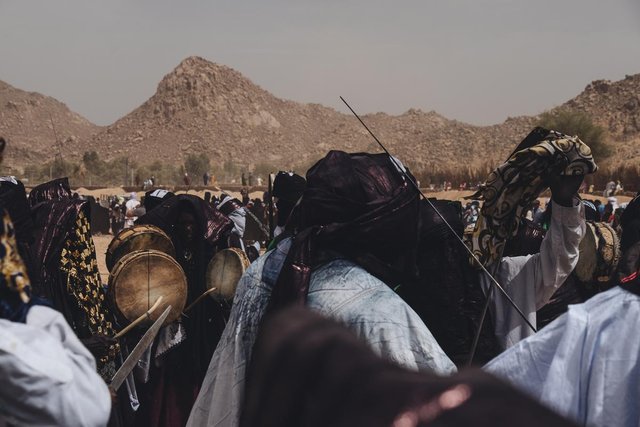
To celebrate this ancient union, Tra' orfitt and Oraren commemorate this important moment in their common history each year.
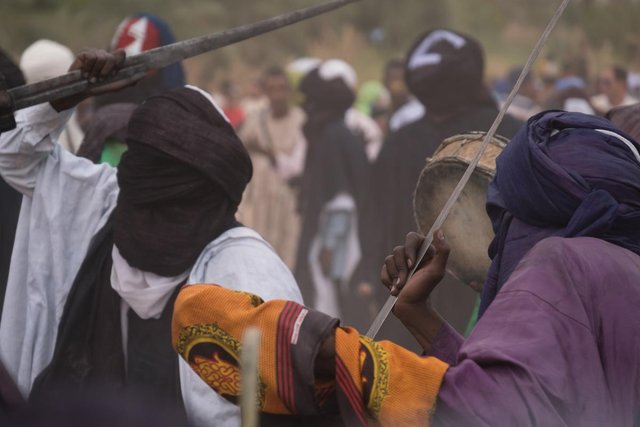
For the occasion, celebrations, rituals and friendly confrontations between the two Tuareg communities are organized.
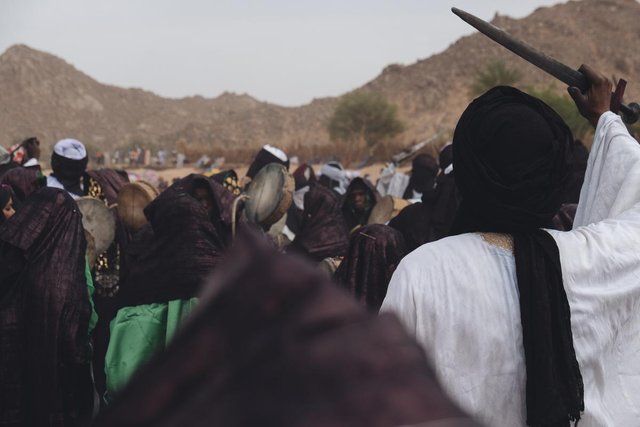
This ancient tradition makes it possible to perpetuate Tuareg customs and make them known to the spectators.

Later on, Bey confided to me that the lyrics of these songs are so old, that even the locals don't know the full meaning of them.
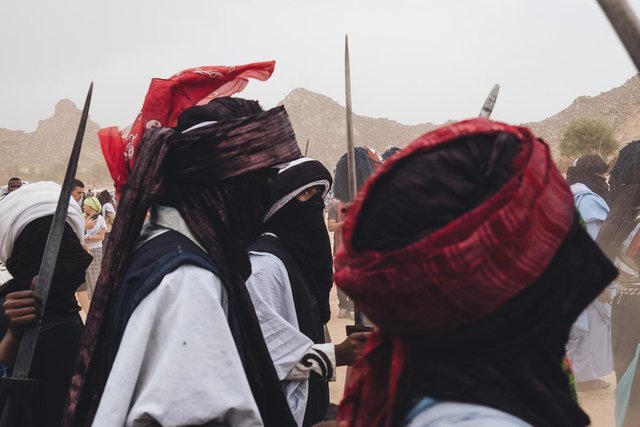
The vast majority of passing travellers leave the oasis of Djanet without knowing the existence of Sebiba. However, it is a unique event that has recently even been included in UNESCO's intangible cultural heritage.
While everywhere I go, I see that ancient traditions are increasingly disappearing,
“this festival offers a real plunge into the multi-millennial traditions of touarègues.”